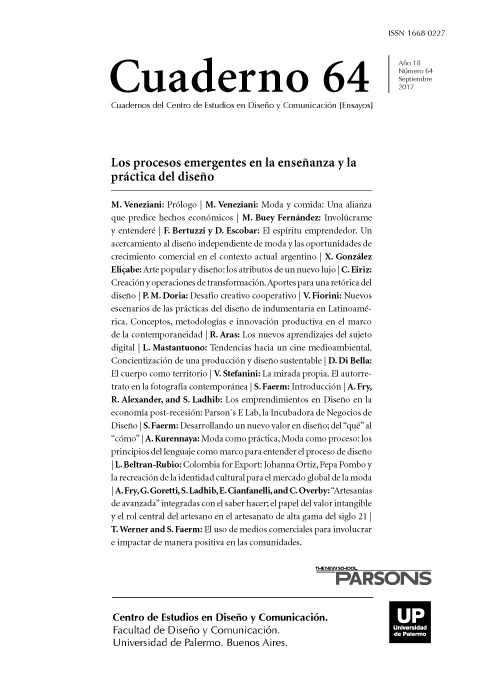Emerging theories of value and commodity in design education and professional practice. Intoduction
Abstract
The successful advancement of design and attendant industries will require a shift, from developing tactical methods of design into those that are strategic and truly meet consumers’ increasingly complex needs. One fundamental method is evaluating how consumers’ concepts of value evolves over time. Value is typically created by factors such as supply and demand, rarity, age, trends (zeitgeist), materials, and/or the brand itself. Yet, these traditional forms of value shift when situated in world where there is an over-abundance of design; for the majority of consumers, all of their basic physical needs are met, and even over-met. Thus, designers must attract their consumers not merely with their products’ physical attributes, but with intangible values that strategically target and fulfill their consumers’ increasingly complex emotional needs. What is the new “value” of design? In design education and professional practice, how will the ways we assess value and commodity change? It is with this need to question and expand the necessary discourse around new theories of value and commodity in design and design education that the Parsons authors present their papers.
References
Los autores/as que publiquen en esta revista ceden los derechos de autor y de publicación a "Cuadernos del Centro de Estudios de Diseño y Comunicación", Aceptando el registro de su trabajo bajo una licencia de atribución de Creative Commons, que permite a terceros utilizar lo publicado siempre que de el crédito pertinente a los autores y a esta revista.


